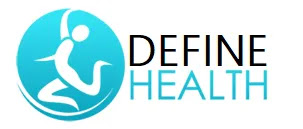Cupping Therapy & Benefits
Cupping Therapy
Those supporting this type of therapy believe that with cup suction the blood flow mobilizes and leads to healing. This therapy goes back to the ancient Chinese, Egyptian and Middle Eastern cultures. The Ebers Papyrus, the oldest medical book, tells a story of how 1,550 B.C. the Egyptians used this therapy. Western medical societies are not fond of the cupping therapy and don’t support the claims that cupping supporters give. The American cancer society says that scientific evidence proves cupping therapy doesn’t cure cancer or other disease. They add that the stories of people being cured with this therapy are coincidental, not scientific.
However, in 2012 the PloS One journal published a study that said cupping therapy may in fact have an effect on some diseases. Chinese and Australian researchers went through more than 100 studies regarding cupping therapy that were published in the period between the years 1992 and 2010. The conclusion they drew was that if the cupping therapy is combined with medications and other treatments like acupuncture, there is a possibility of fighting diseases like facial paralysis, herpes zoster, cervical spondylosis and acne.
Even though researchers agree there is something going on, they feel certain there is a need of more studies in order to draw a good conclusion.
Types of cupping therapy:
Wet cupping, which is a combination of controlled medical bleeding and suction.
Dry cupping, meaning suction only.
Regardless the type of cupping therapy, there is always a flammable substance present. It can be paper, alcohol or herbs. They are put in the cup, then set on fire and put on the patient’s skin. When the air in the cup starts cooling down, a vacuum is created. During that process blood vessels on the skin expand and cause the skin to rise and redden. The cup is left on the skin 5 to 10 minutes. The modern version of cupping creates the vacuum in the cup with a rubber pump. Often, medical grade silicone cups are used. These cups are easy to move around the skin and create a massage like effect.
Wet cupping involves mild suctions. The cup is left in one place no more than three minutes. After the cup is removed, the practitioner makes a small incision using a scalpel. The incision is superficial. After that, the practitioner performs one more suction in order to draw a small amount of blood. The open wounds are covered with an antibiotic and bandage after the procedure is done. It normally takes 10 days or so for the skin to return in the original state. The supporters of this therapy believe that with this method all toxins and harmful substances are removed from the body. That way, the healing happens.
Cupping therapy, benefits
According to the British cupping society lots of conditions can be treated with cupping therapy. This belief still isn’t scientifically confirmed. However, the organization claims you can threat the following conditions:
- Rheumatic diseases like fibromyalgia and arthritis.
- Gynecological and fertility disorders.
- Blood disorders like hemophilia and anemia.
- High blood pressure.
- Migraine.
- Skin problems like acne and eczema.
- Anxiety and depression.
- Varicose veins.
- Bronchial conditions like asthma and allergies.
It is also believed that cupping therapy can reduce inflammation and pain in the body and contribute to mental and physical relaxation.
Side effects of the therapy.
When performed by trained professionals the therapy is mostly safe. But if done wrong here can be some side effects:
- Burns.
- Bruises.
- Mild discomfort.
- Skin infection.
The British Cupping Society urges these groups of people not to undergo cupping therapy:
- Patients with metastatic cancer (that has spread from one organ to another)
- People with muscle spasm and fractures
- Menstruating and pregnant women.
Also, the cups shouldn’t be applied to parts of the body that have:
- Ulcer.
- Artery.
- Deep vein thrombosis.
- Pulse points.
The American Cancer Society expresses its worry that patients may avoid proper treatment and rely solely on cupping therapy. They urge people not to do that because if not properly care, any disease can have fatal consequences and may even become incurable. Moreover, the marks from the therapy can be confused with bruises from physical abuse. Cupping therapy, just like all other alternative methods is still being studied. However, researchers say that the studies conducted in the past haven’t been properly designed. In order to confirm or disprove the claims of the supporters of cupping therapy, a lot more studies need to be conducted in the future.




